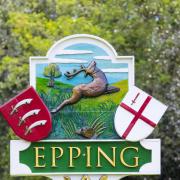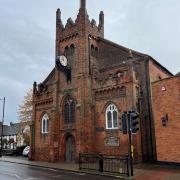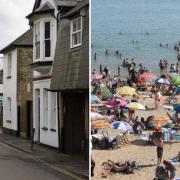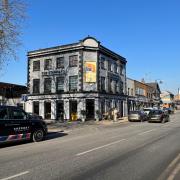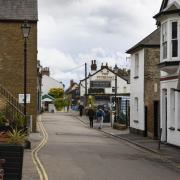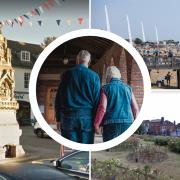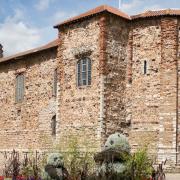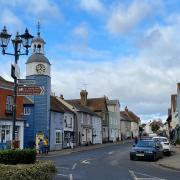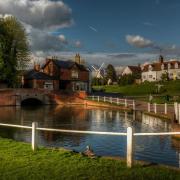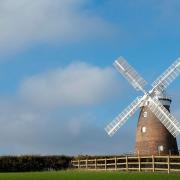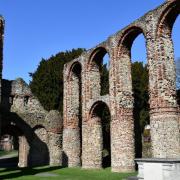This month, on September 21 to be precise, will mark the diamond anniversary of Havering’s very own piece of theatre land, The Queen’s Theatre in Hornchurch.
The original Queen’s Theatre began life in Station Lane. In 1948, Hornchurch Urban District Council made the decision to purchase a derelict cinema, following its use as a depot for medical supplies and later for the storage of furniture from bombed buildings, with the aim of converting it into a local theatre for the community.
The Queen’s Theatre is believed to have been the first in the UK to have been founded as a civic theatre. The first production to be staged was See How They Run, a farce by Philip King. The newly-created theatre also had its own company of actors, The Queen’s Players, performing in repertory style, rehearsing one production by day and performing another by night. This method continues at the Queen’s today and the public are able to see familiar faces cast in a series of different roles.
Over the years, the Players have welcomed many actors who later became widely known including Martin Shaw, Bernard Cribbins, Joan Plowright, Glenda Jackson and Prunella Scales.
On April 2, 1975, the Queen’s had its opening night at its current location in Billet Lane, an event local resident Christine Sutton remembers well. ‘I was a member of the Theatre Club and was lucky enough to win tickets for the opening night,’ says Christine. ‘I was there with my mum when Sir Peter Hall declared the new theatre open, after which we enjoyed a wonderful performance of Joseph and the Amazing Technicolor Dreamcoat, starring Patrick Ryecart.’
On February 6, 1979, the theatre achieved a dream of its own with a production of The Who’s rock ‘n’ roll musical Tommy making a direct West End transfer to the Queen’s Theatre on Shaftesbury Avenue.
During the eighties the Queen’s took to the road beyond the bright lights of London for the first time with Alan Bleasdale’s Having A Ball, which had returned to the Queen’s stage due to popular demand for a short run in spring 1985. Six simultaneous touring productions followed the next year including Jesus Christ Superstar and Funny Peculiar visiting such locations as Aberdeen, York, Bristol and Hull.
University of Hull graduate Bob Carlton became artistic director of the Queen’s in 1998. Bob is also well known as a writer and while working with the London Bubble Theatre Company some years prior to his arrival in Hornchurch, he penned the Olivier award-winning musical Return to the Forbidden Planet. At the Queen’s he also founded the current resident company Cut to the Chase. Company members also sing and play musical instruments, talents that are regularly put to good use in many of the theatre’s productions.
In addition to eight in-house productions and the annual pantomime each year (Dick Whittington is planned for 2013), perhaps the longest established feature of the Queen’s is Pete Corrigan’s Band of Hope which has been performing lively Dixieland Jazz on Sunday lunchtimes for more than 38 years. The theatre also has a diverse range of visiting artists such as the London Swing Orchestra, Sumaya Flamenco and comedy writer and performer Barry Cryer.
The theatre also produces a bi-annual community play. In the summer of 2012 Lighting Up the Lane, co-written by Dave Ross, Gerry Sweeney and the theatre’s education outreach manager Patrick O’Sullivan, retold a partially fictionalised story of the theatre’s origins.
Patrick explains: ‘It was pretty exciting to put on for the people of Hornchurch. I had the opening scene in my head, which is these children sat in the cinema watching this old Chaplin film and we knew that the end was the birth of the Queen’s Theatre in 1953.’
This year the theatre started anniversary celebrations by helping to showcase the borough with the inclusion of a float in the New Year Parade in London, designed by Gemma Compton. It was later awarded a gold medal.
In association with the Havering Museum, staff from the Queen’s have created an exhibition which presents information on their history and how the theatre has evolved. Its tour of the borough’s community spaces started in April from the Local Studies and Family History Centre within Romford’s Central Library. Among others, it has also visited The Old Chapel at the Sacred Heart of Mary Girls’ School in Upminster, MyPlace in Harold Hill and Hornchurch Library, before arriving at the theatre on its anniversary in September, finishing in mid-October.
In a continued desire to bring an experience to its audience, in June the theatre performed an Elizabethan-style production of Shakespeare’s As You Like It in the beautiful Langton’s Gardens as part of the anniversary celebrations.
Continuing to serve its community, as it promised to do in 1953, I think the majority would say, ‘God save the Queen’s’ for generations to come.




